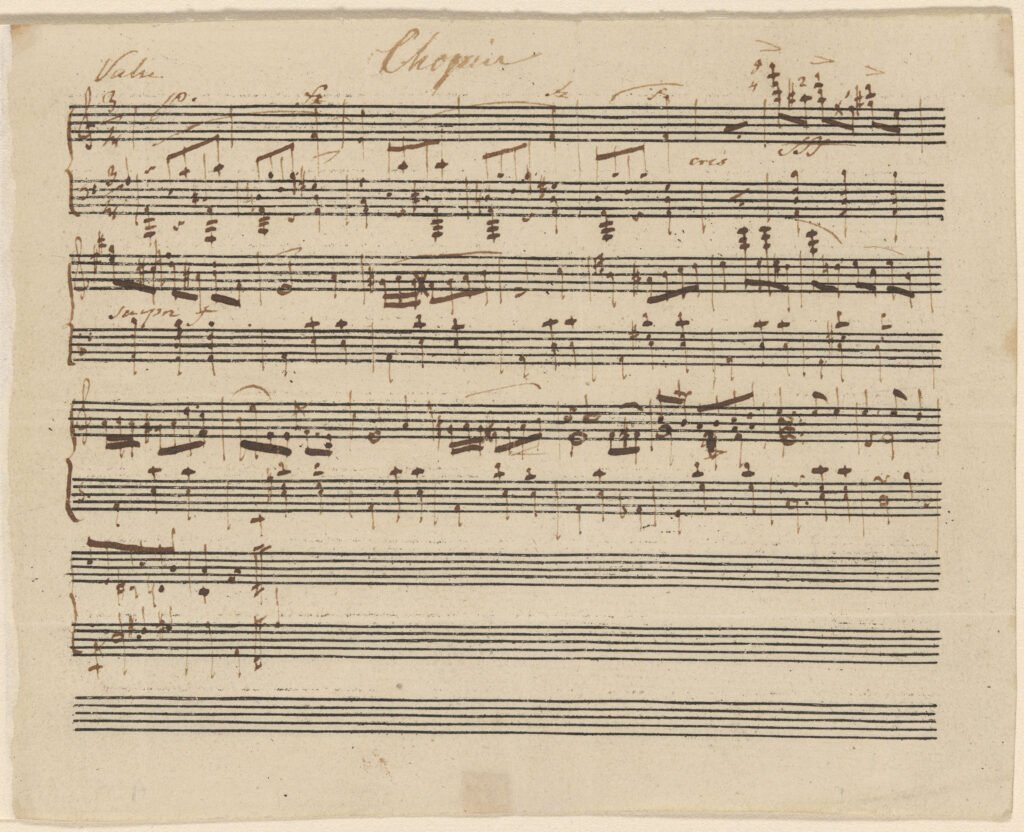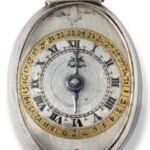A previously unknown waltz by Frédéric Chopin has been discovered in the Morgan Library and Museum (pdf) in New York City. It is the first new piece by the great Romantic composer to be discovered since the 1930s. Only a minute long, it the shortest known waltz written by him.

The small manuscript written in the hand of the Polish-born virtuoso was discovered in the library’s collection by Associate Curator of Music Manuscripts and Printed Music Dr. Robinson McClellan in 2019. He was cataloging the Arthur Satz Collection of arts and culture memorabilia which had just joined the Morgan’s extensive collection when he encountered a small page about 4 x 5 inches so just a bit larger than an index card. The piece had no title other than “Valse” in the upper left and the name “Chopin” written across the upper center.
The Morgan’s manuscript consists of twenty-four notated measures that the composer asks the pianist to repeat once in their entirety. Chopin famously wrote in “small forms,” but this work, lasting about one minute, is shorter than any other waltz by him. It is nevertheless a complete piece, showing the kind of “tightness” that we expect from a finished work by the composer. The beginning of the piece is most remarkable: several moody, dissonant measures culminate in a loud outburst, before a melancholy melody begins. None of his known waltzes start this way, making this one even more intriguing.
McClellan took a photograph of the manuscript and sent it to leading Chopin scholar Jeffrey Kallberg, a professor at the University of Pennsylvania. Together they investigated the manuscript and studied the music to authenticate the manuscript. McClellan also brought it additional Chopin experts and the Morgan’s paper conservators to study the paper and compare it to the paper Chopin used in his authenticated manuscripts.
The investigation confirmed that the machine-made paper and iron gall ink date to the 19th century, and the style of the music is consistent with Chopin’s works from the early 1830s. The handwriting also matches Chopin’s, including a uniquely idiosyncratic way of writing the bass clef symbol and the written “Valse” on the upper left.
Chopin died young. He was just 39 when he died, likely of tuberculosis, in 1849, and there are about 250 known compositions by him. Only eight of his waltzes were published during his lifetime; nine more were published posthumously. The rest, perhaps as many as 10 more, have been lost. He never wrote a symphony or any other long-format piece, and he preferred to perform his new music before small groups in salons rather than in concert halls.
Fans would approach him at these events and have the unimaginable temerity to ask him to give them a little autographed musical manuscript. He is known to have given away at least five small manuscripts of the Waltz in F Minor. Scholars believe the newly-discovered Morgan waltz may have been intended as one of those salon gifts. He signed those, however, and this one is unsigned (the “Chopin” written across the top is not in his hand), so he probably wrote it out but then never gave it to anyone.
The New York Times engaged pianist Lang Lang to play Chopin’s lost waltz for the first time in 200 years at Steinway Hall in Manhattan, so without further ado, here is the debut of Waltz in A Minor by Frédéric Chopin.
That’s the sound of a Chopin waltz that was unearthed after nearly 200 years. Here’s the story of how an unknown work in the composer’s hand was discovered in a New York museum, the first such find in more than half a century. https://t.co/RXb1FfJOmL pic.twitter.com/yeGxE10EoX
— The New York Times (@nytimes) October 27, 2024







